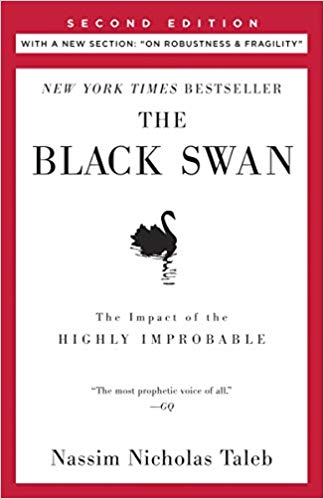

This article is an excerpt from the Shortform summary of "The Black Swan" by Nassim Taleb. Shortform has the world's best summaries of books you should be reading.
Like this article? Sign up for a free trial here .
What is scalability? How does scalability affect our lives? When is scalability a good thing? When is it a negative thing?
Scalability is the characteristic or ability of a company or process to grow and adapt to changing demands. In the scalable parts of our lives, physical limits don’t apply and effects tend toward incredible extremes.
We’ll further explore the scalability definition above, cover how scalability affects our lives, and cover which areas of our lives are most impacted by scalability.
What Is Scalability?
One reason that Black Swans are so profoundly disruptive is that they occur in the “scalable” parts of our lives—where physical limits don’t apply and effects tend toward incredible extremes. When a particular thing—an income, an audience for a particular product—is “scalable,” it can grow without any additional expenditure of effort.
To answer the question, What is scalability? let’s look at careers as an example.
“Massage therapist,” for example, is a “nonscalable” profession. There is an upper limit on how many clients you can see—there’s only so much time in a day, and therapists’ bodies fatigue—and thus there’s only so much income you can expect from that profession.
“Quantitative trader,” however, is a “scalable” profession. It takes no additional energy or time to purchase 5,000 shares of a stock than 50, and your income isn’t limited by physical constraints.
Artists, too, are in a scalable profession (at least in the age of digital reproduction). For instance, a singer doesn’t need to perform her hit song each time someone wants to hear it. She performs it once for the record, and that performance can be disseminated widely.
What is scalability? It’s the ability of something to grow with increased resources. The problem with scalability is that it creates vast inequalities. Let’s look at the singer example again:
- Before the advent of recording technology, a singer’s audience was limited to those for whom she could physically perform. That is, a singer in one town wasn’t likely to prevent the survival of a singer in another town; they might have differently sized audiences—based on the populations of their respective towns—and thus different incomes, but those differences would be comparatively mild.
- After the advent of recording technology, however, a small number of singers come to dominate the listening public. Now that we can pay pennies to stream Beyoncé any time we want, why spend the $10 or $20 to see a local singer we’ve never heard of? Suddenly, differences in audience and income become vast. With scalability comes extremes.
Scalability, Mediocristan, and Extremistan
What is scalability? And what does scalability have to do with Mediocristan and Extremistan? “Mediocristan” is Taleb’s term for the facets of our experience that are nonscalable. For example, like the income of a massage therapist, human physical traits such as height and weight hail from Mediocristan—they have upper and lower bounds, and if you were to graph every human’s height and weight, you would produce a bell curve.
Mediocristan’s overriding law can be stated thus: Given a large-enough sample size, no individual event will have a significant effect on the total. That is, there will be outliers—extremely heavy or tall people—but those outliers (1) will not be exponentially larger or smaller than the average, and (2) will be rendered insignificant by the sheer number of average cases. Most physical phenomena—human footspeed, trees’ rate of growth—come from Mediocristan. (Shortform note: Taleb sometimes treats Mediocristan as a distinct place, other times as an adjective to describe certain kinds of phenomena.)
“Extremistan,” oppositely, describes those facets of our experience that are eminently scalable. In Extremistan, inequalities are vast enough that one instance can profoundly affect the total. What is scalability? It’s a phenomenon that characterizes Extremistan.
Most social (man-made) phenomena come from Extremistan. For example, wealth: It has no readily detectable upper limit; and if you were to include, say, Jeff Bezos, in any average of human wealth, you would produce a grossly distorted picture of how much money most people have.
Extremistan—Where Black Swans Fly
In the realm of Mediocristan, randomness is highly constrained (mild): There’s only so much variation in the physical aspects of our world. Thus, in Mediocristan, Black Swans are (effectively) impossible.
In Extremistan, however, randomness is highly variable (wild): No matter how large your sample size for a given phenomenon, you can’t produce a trustworthy average or aggregate picture because of the variation in that phenomenon. In Extremistan, Black Swans are frequent.
| Key Qualities of Mediocristan | Key Qualities of Extremistan |
| Nonscalable | Scalable |
| Typical member is mediocre (“average,” in the statistical sense) | Most members are dwarfs, a few are giants |
| Best-off are only marginally better than worst-off | Best-off are considerably better off than worst-off |
| Events are predictable from available information | Events are highly unpredictable from available information |
| Probability distribution is a bell curve | Probability distribution accords either with Mandelbrotian “Gray” Swans or is dominated by Black Swans |
What is scalability? Consider an Extremistan phenomenon like wealth. In Europe, the probability that someone has a net worth higher than 1 million euros is 1 in 62.5; higher than 2 million euros, 1 in 250; higher than 4 million, 1 in 1,000; higher than 8 million, 1 in 4,000; and higher than 16 million, 1 in 16,000. The odds decrease at a constant, rather than accelerating, rate, indicating that their distribution doesn’t conform to a bell curve.
(Note: The European wealth statistics cited above aren’t precise, but they illustrate the central point: that wealth is scalable and does not look like a bell curve.)
The upshot is that in Extremistan, as the name suggests, extreme events have much better odds of occurring than in Mediocristan. Simply put, the bell curve does not apply. Another way of answering, What is scalability?: It’s when the bell curve doesn’t apply.
———End of Preview———

Like what you just read? Read the rest of the world's best summary of "Black Swan" at Shortform . Learn the book's critical concepts in 20 minutes or less .
Here's what you'll find in our full Black Swan summary :
- Why world-changing events are unpredictable, and how to deal with them
- Why you can't trust experts, especially the confident ones
- The best investment strategy to take advantage of black swants






